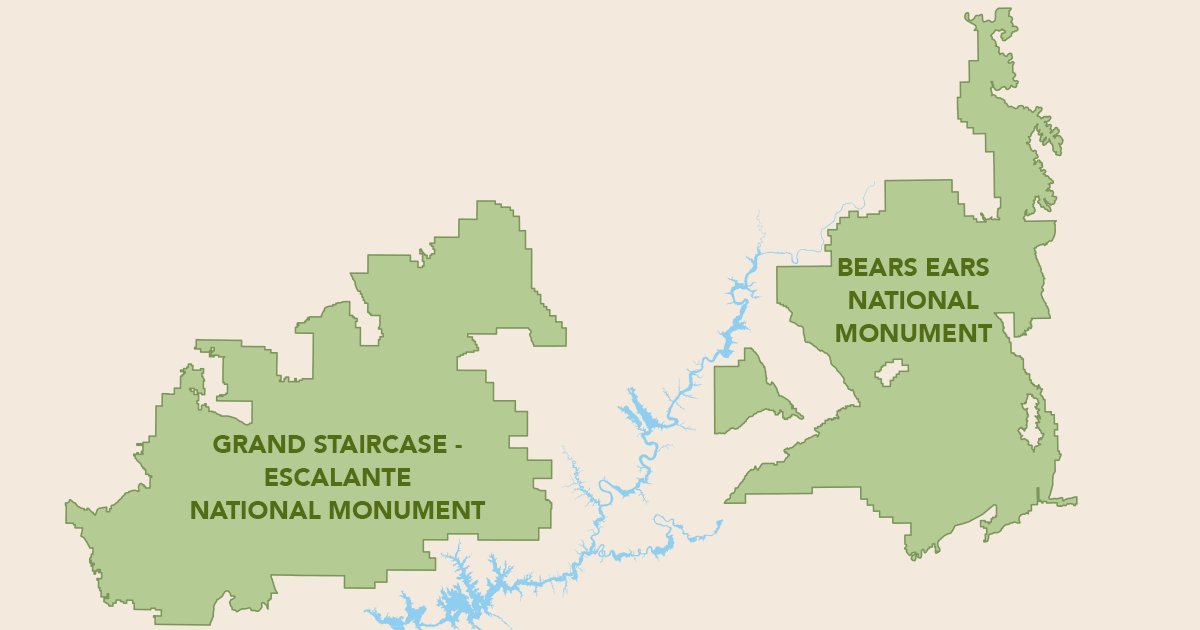 |
| ONE OF THE MANY BEAUTIFUL SANDSTONE CANYONS WITHIN THE GRAND STAIRCASE-ESCALANTE NATIONAL MONUMENT. COLIN D YOUNG/SHUTTERSTOCK |
Trump Administration Drastically Shrinks Two Major National Monuments
The Trump administration officially ordered the shrinking of two major national monuments in Utah earlier this week. The Bears Ears National Monument, which was set up by President Obama back in 2016, will be shrunk in size by 85 percent, whereas Grand Staircase-Escalante – a Clinton administration feature – will be cut by around 50 percent.
As reported by The New York Times, this loss of almost 8,100 square kilometers (3,100 square miles) is the most significant rollback in the history of protected federal lands in American history.
The Antiquities Act points out that presidents should only choose the smallest area possible in order to preserve sites of scientific or historic interest, and some landowners and conservative lawmakers have argued that recent monument designations have overreached in this regard. This latest decision, therefore, has been a cause for celebration for some.
Others – particularly Democrats, conservationists, researchers, and some Native American groups – see this as an attack on land that should remain protected. Although the land lost remains under federal control, the worry is that resource extraction will be allowed on the site – something that will almost certainly damage the surrounding environment and the tens of thousands of archaeological sites they contain.
Scientists, who often consider these monuments as living laboratories, are also dismayed by the decision. Speaking to Scientific American, several suggest that apart from important climate, palaeontological, and zoological research being upended by the actions, wildlife migration will be impacted too.
Upon hearing of the announcement, several tribes and groups of environmentalists explained to reporters that they’re going to protest the move. Some are planning to sue.
“The reductions are widely assumed to be a way to open more of these priceless landscapes to mining and drilling,” The Wilderness Society, a non-profit land conservation organization, said in a statement.
“[We] will be filing a legal challenge to this attack, and we won't be alone.”
National Monuments are protected areas, either terrestrial or marine, that are somewhat similar to national parks. Unlike the latter, which requires Congressional approval, monuments can be created by order of the President. Similarly, they can be shrunk in that way.
They stem from the 1906 Antiquities Act, which originally came about in order to protect Native American ruins. The Act also permits areas of historic or scientific interest to gain a protected status.
Today, thanks to this piece of legislation, there are 27 national monuments scattered all over the country.
Back in August, the results of an Interior Department report on the state of the country’s national monuments was widely expected to deliver bad news: the unprecedented nixing of various national monuments, along with a range of shrinkages.
The Trump administration has a terrible track record when it comes to conservation, environmentalism, and science in general – so it came as an enormous surprise that the Secretary of the Interior, Ryan Zinke, announced that all 27 national monuments would retain their status. Ominously, however, it was noted that a “handful” of them would experience boundary changes.
Now it’s clear what that meant. The White House avoids the term “shrinking” altogether in an official press release, and instead claims that their “modification” of the boundaries has created “five unique national monument units”, which simply means that the remaining protected area has been fragmented into even smaller pieces.
“The Antiquities Act does not give the Federal Government unlimited power to lock up millions of acres of land and water, and it’s time we ended this abusive practice,” the President said in a statement released by the White House.
The President himself has explicitly referred to the oft-cited federal overreach as being the driving factor behind the shrinkage decision. Similar actions at other agencies citing precisely the same concern, however, appear to just be a cover for industry-led takeovers. Will the same apply this time around?







No comments:
Post a Comment